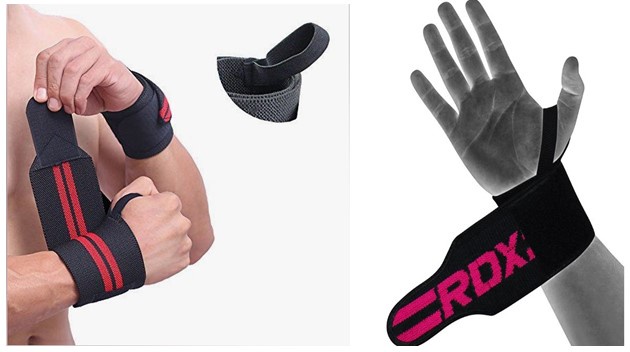Wrist support is often overlooked but plays a crucial role in maintaining wrist health and preventing injuries. Whether you're an athlete, office worker, or someone dealing with a medical condition, understanding the importance of wrist support and how to choose the right one can make a significant difference in your daily life.
Introduction to Wrist Support
Wrist support encompasses a variety of products designed to provide stability, compression, and protection to the wrist joint. From braces to wraps to splints, these aids can alleviate pain, reduce the risk of injury, and enhance overall performance. Common wrist issues such as carpal tunnel syndrome, arthritis, and tendinitis can benefit greatly from proper support.
Types of Wrist Support:
Braces:
Wrist braces are rigid devices that immobilize the wrist joint, offering maximum support and stability. They are often recommended for acute injuries or during recovery from surgery.
Wraps:
Wrist wraps are flexible bands that provide compression and support to the wrist. They are commonly used during physical activities to prevent overextension and strain.
Splints:
Wrist splints are semi-rigid devices that provide a combination of support and mobility. They are ideal for conditions like carpal tunnel syndrome, offering support while allowing some degree of movement.
Benefits of Wrist Support:
Wrist support offers numerous advantages for individuals of all ages and lifestyles. Here are some key benefits:
- Pain Relief:
Wrist support aids in reducing discomfort associated with conditions like carpal tunnel syndrome, arthritis, and tendinitis. By stabilizing the wrist joint and minimizing pressure on sensitive nerves and tissues, it alleviates pain and promotes comfort during daily activities.
- Injury Prevention:
Properly fitted wrist support helps prevent injuries caused by repetitive motions, overuse, or sudden impacts. By providing stability and support to the wrist joint, it reduces the risk of strains, sprains, and fractures, particularly during sports, physical labor, or repetitive tasks.
- Enhanced Performance:
Athletes and active individuals can benefit from wrist support to improve their performance and endurance. It helps maintain proper wrist alignment and form, reducing fatigue and optimizing muscle function during activities such as weightlifting, tennis, golf, and basketball.
- Support During Rehabilitation:
Following wrist injuries or surgical procedures, wearing wrist support is often part of the rehabilitation process. It aids in protecting the injured area, promoting healing, and restoring strength and mobility to the wrist joint, facilitating a quicker and more successful recovery.
- Comfort and Stability:
Individuals with weakened wrists or instability due to conditions like arthritis or ligament injuries find comfort and stability with wrist support. It provides a reassuring sensation of support, allowing for increased confidence and functionality in daily tasks and recreational activities.
- Postural Alignment:
Proper wrist support contributes to overall postural alignment, particularly during activities that involve prolonged periods of wrist extension or flexion, such as typing or using handheld devices. By promoting neutral wrist positioning, it reduces strain on surrounding muscles and ligaments, minimizing the risk of overuse injuries.
How to Choose the Right Wrist Support:
When selecting wrist support, consider factors such as:
- The type and severity of your condition or injury
- The level of support and mobility required
- The fit and adjustability of the product
Using Wrist Support Correctly:
It's essential to wear wrist support correctly to reap its full benefits. Follow these tips:

- Ensure a snug but comfortable fit.
- Position the support correctly over the wrist joint.
- Avoid wearing it too tightly, as this can restrict blood flow.
Wrist Support for Different Activities:
Typing and Computer Work:
Office workers and typists can benefit from wrist support to prevent repetitive strain injuries and maintain proper wrist alignment.
Weightlifting:
Weightlifters often use wrist wraps to stabilize the wrist joint during heavy lifts, reducing the risk of injury and improving grip strength.
Sports:
Athletes in sports like tennis, golf, and basketball can enhance their performance and prevent wrist injuries by wearing appropriate support during training and competitions.
Wrist Support for Medical Conditions:
Carpal Tunnel Syndrome:
Wrist braces and splints are commonly recommended for managing carpal tunnel syndrome by reducing pressure on the median nerve.
Arthritis:
Individuals with arthritis can find relief from pain and stiffness by wearing wrist support that provides gentle compression and warmth to the affected joint.
Tendinitis:
Wrist wraps can help alleviate pain and inflammation associated with tendinitis by providing support and stability during activities that aggravate the condition.
Alternative Methods for Wrist Support:
In addition to traditional wrist support products, alternative methods such as:
- Exercises: Strengthening and stretching exercises can improve wrist stability and flexibility.
- Ergonomic adjustments: Making ergonomic changes to your workspace or equipment can reduce strain on the wrists during daily activities.
Myths and Facts about Wrist Support:
Myth: Wearing wrist support weakens the muscles.
Fact: Properly used, wrist support can actually help strengthen muscles by promoting proper alignment and reducing strain.
Myth: Wrist support is only for athletes.
Fact: Anyone can benefit from wrist support, regardless of their level of physical activity or occupation.
Case Studies:
Real-life examples illustrate the effectiveness of wrist support in relieving pain, preventing injuries, and improving overall wrist health.
Innovations in Wrist Support:
Advancements in technology and design have led to the development of innovative wrist support products that offer improved comfort, durability, and functionality.
Cost of Wrist Support:
Wrist support products are available at various price points to suit different budgets and preferences. While some options may be more affordable, others offer advanced features and materials at a higher cost.
Expert Opinions on Wrist Support:
Medical professionals recommend wrist support as a valuable tool for managing and preventing wrist injuries and conditions. They emphasize the importance of proper fitting and usage to maximize benefits.
Conclusion
Wrist support is a simple yet effective solution for maintaining wrist health, preventing injuries, and enhancing performance in various activities. By choosing the right type of support and using it correctly, individuals can experience significant improvements in comfort, mobility, and overall well-being.


No comments yet